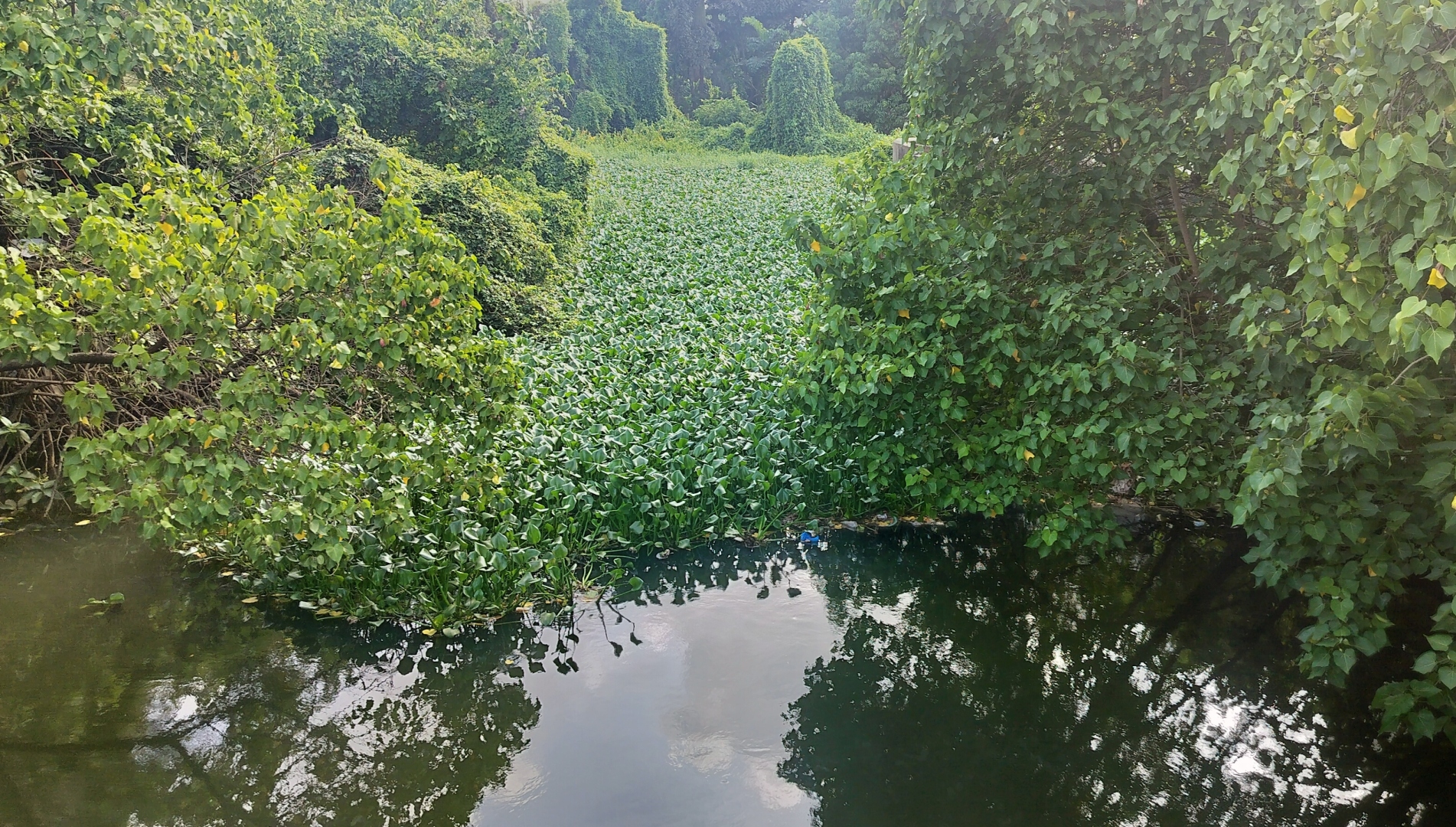
DANGEROUS PROPOSITION: The upstream section of the Mapusa River is silted and overrun with water weeds, choking the river and obstructing the free flow of rainwater, which exacerbates the flooding situation in monsoon.
Photo Credits: Agnelo Pereira
MAPUSA
The recurring monsoon flooding in Guirim has once again brought to light the urgent need for dredging and desilting the Tar/Mapusa River, a proposal that has lingered without action for years.
Despite clear directives and the looming threat of inundation, the concerned authorities have yet to make significant progress on this front, leaving the local population vulnerable to the annual deluge.
Three years ago, Guirim experienced its most severe flooding in recent history. During the monsoon season, relentless heavy rains resulted in extensive submergence of the village, inundating fields, homes, and roads.
The low-lying areas on both sides of National Highway (NH-66) were particularly affected, with water entering residents’ homes and making internal roads impassable.
The flooding caught the attention of the media, prompting Chief Minister Pramod Sawant to visit the area along with officials from the Public Works Department (PWD) and the Water Resources Department (WRD).
The Chief Minister’s inspection led to a directive for the departments to explore the possibility of dredging and desilting the Tar/Mapusa River as a long-term flood mitigation measure.
However, despite the clear need and initial directives, the proposal to desilt the Tar River has stalled.
The river, silted and clogged with water weeds, continues to obstruct the free flow of rainwater, exacerbating the flooding situation.
Illegal landfilling by locals has compounded the problem, further reducing the area’s natural drainage capacity.
Several nullahs from the surrounding hills of Sangolda and other areas converge into the Tar River.
During heavy rains, the river swells, and tidal wave conditions contribute to flooding in Guirim and neighbouring areas like Bastora.
Former Guirim sarpanch Fondu Naik vividly recalls the catastrophic floods of 2021, which left residents of St Anthony vaddo and around the panchayat office in Guirim stranded in their homes for days.
The severe inundation of homes and fields along NH-66 highlighted the urgent need for a solution.
Naik recounts the Chief Minister’s visit and the subsequent assurances given by officials, which have yet to materialize into concrete action.
According to a senior WRD official, the department has prepared detailed plans to dredge the Tar River at an estimated cost of Rs 40 crore.
The proposal includes desilting the river to a depth of at least two meters, which is essential for ensuring adequate drainage of rainwater into the river.
“We are awaiting funds from the central government as the proposal has been prepared to desilt the river from Guirim to Tar bridge,” the official stated.
This wait for funding has become a significant bottleneck in the implementation of the necessary measures.
The inaction has left local residents and officials frustrated.
“Our government makes tall assurances, but in reality, nothing happens. Maybe they are waiting for another flood-like situation where some people perish to get things moving,” said Naik, reflecting the growing disillusionment among the community.
The failure to act on the dredging proposal not only jeopardizes the safety and livelihoods of Guirim’s residents but also undermines public trust in the government’s ability to manage natural disasters effectively.
The call for immediate and decisive action on the dredging and desilting of the Tar/Mapusa River is more urgent than ever.
It remains to be seen whether the authorities will finally take the necessary steps to protect the village from the recurrent monsoon menace.